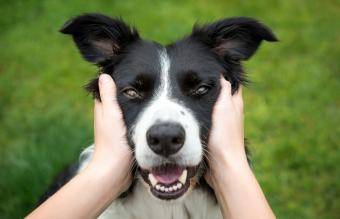
Are Toy Poodles the perfect canine companions? Read on and decide for yourself.
Origin of Toy Poodles
The Toy Poodle was not always as you see him now. Bred down from the Standard Poodle, the Toy's predecessors stand over fifteen inches tall, sometimes even taller. The temperament and intelligence of the Standard was so prized that an effort was made to reduce his size to a small companion animal, and this is how the Toy came to be.
Today the Poodle is available in threes sizes, one to satisfy any admirer's companion needs.
- Standard: Over Fifteen inches and above at the shoulder
- Miniature: Above ten inches and limited to fifteen at the shoulder
- Toy: Up to ten inches
Controversy
Toy Poodles are extremely popular, and a number of countries have attempted to claim responsibility for their origin. France and Germany seem to have the largest claims. The Poodle reached such popularity in France that it was commonly referred to as the French Poodle, however, the breed's name actually comes from the German word "pudel", which means water dog.
The only thing that can be said for sure is that the French breed known as the Barbet, and the Hungarian Water Dog are both found in the Poodle's ancestry. Wherever the breed came from, Toy Poodles are loved the world over.
General Appearance
Toy Poodles are lively, intelligent little dogs and devoted companions that look a bit like stuffed animals due to their fluffy, curly coats.
This breed has a relatively square outline, and carries itself quite proudly. Individuals should be of medium bone without looking chunky, and everything should appear in proportion to the dog's relative size.
The Toy's muzzle is rather slender, with a slightly rounded head and almond-shaped eyes.
Coat
The Toy Poodle's coat is his crowning glory. Thick and slightly curly, it stands on end which makes it ideal for creating those hair styles Poodles are famous for.
Although many promoters of the breed will tell you they don't shed, this is not exactly the case. The loose hairs actually catch in the curls, eventually forming mats unless they are brushed out.
What this does mean is that you won't find the typical coating of dog hair on your person and furniture as you would with many other dog breeds. People suffering from dog allergies often find they can tolerate Poodles much more easily, but every case is unique and blanket statements about Poodles being hypo-allergenic should be taken with a grain of salt.
Coat colors include:
- Black
- Blue
- Silver
- Cream
- Brown
- Red
- Apricot
- Cafe-Au-Lait
Parti-colored Poodles are a cause for controversy. The American Kennel Club only accepts solid colors, but other registries do allow color combinations such as black and white, red and white, etc.
Size
Officially, Toys should be no taller than ten inches and ideally weigh between six and nine pounds. This keeps them within the desired range for a small companion dog.
Grooming
This breed requires quite a bit more coat care than others, so be prepared to spend considerable time grooming.
There are three standard clips permissible for the show Poodle and an infinite variation of trims for companions.
- The puppy clip is basically a one-length trim over the main body of the dog. The hair on the head, ears and tail is left a bit longer a sculpted into puffs that still give the Poodle its signature look.
- The Continental trim is perhaps the most recognized clip. The hair is grown out on the head, ears, and main body of the dog and shaped with scissors for balance. The hair on the head is tied up to create a topknot. The rear end of the dog is shaved, leaving pom poms of hair over both hips joints and the end of the tail. The legs are also shaved clean, leaving bracelets around each ankle area.
- The English Saddle clip is similar to the Continental, but leaves more hair on the rear half of the dog.
The face is shaved clean in all three trims.
The average companion animal will need a bath about twice a month, daily brushing, and a good clipping about every six weeks to keep him in fair shape. The excess hair in the ears should be gently pulled to allow better ear flow and head off infection.
Toy Poodles are also strong candidates for gum disease and will benefit from weekly tooth brushing.
Trainability
Toys are just about unlimited in what they can be trained to do. These dogs are very devoted to their human families and will go to great lengths to please them, so they learn rather quickly. Housebreaking is easily accomplished and most individuals catch on quickly to any other household rules.
Toys also make great obedience and agility dogs, and are well-known crowd pleasers in the show ring.
One slight drawback in the Toy's personality is its propensity toward barking. These little dogs have keen hearing, and their main function as watch dogs is to alert their owners with a bark whenever they think something is going on. Although this barking seldom reaches nuisance proportions, you should make an effort to gently curb it while your dog is still young.
Health Issues
Toys are prone to several health concerns, including:
- Slipping knees
- Ear infections
- Skin diseases
- Eye problems
- Gun disease
Conclusion
Keen intelligence, extreme devotion, and a size suitable for tucking under your arm all make the Toy Poodle a great choice for a companion. As with any breed you'd consider for a house pet, spend some time with a breeder getting to know his/her stock in order to be sure a Poodle is the breed for you.







